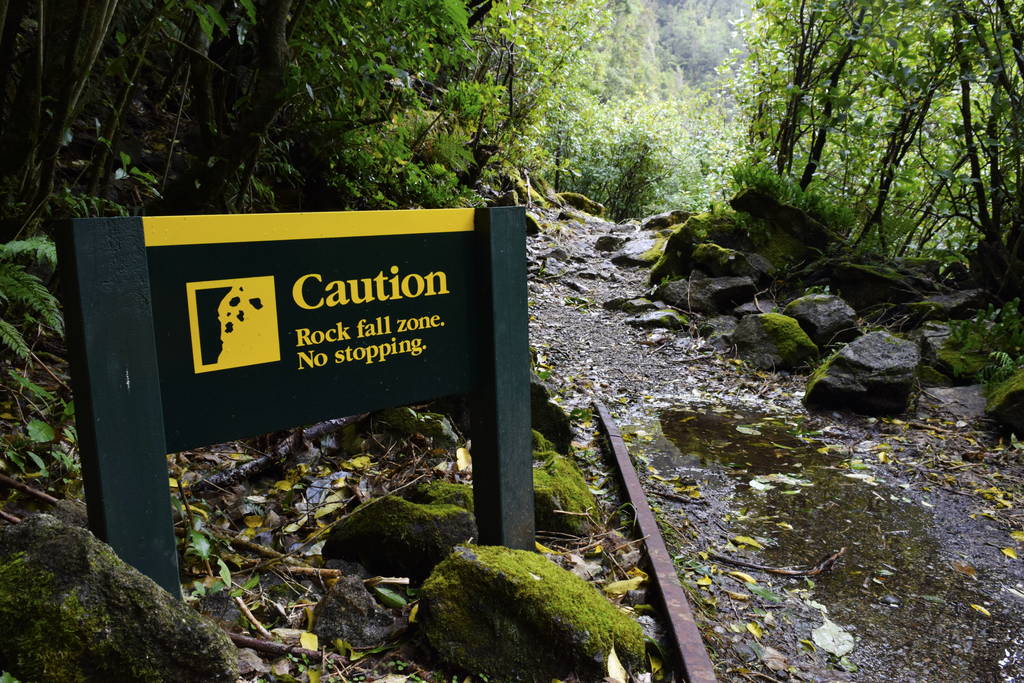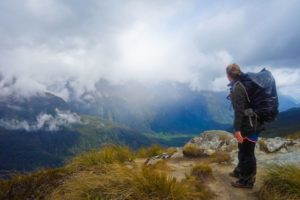Prepare for the New Zealand Wilderness
True wilderness is only discovered by doing a multi-day hike! New Zealand certainly doesn’t have a lack of multi-day hikes or ‘tramping tracks’ as the Kiwis would say. With mountain ranges, volcanoes, lakes, rivers and rainforest, New Zealand invites people to tie up their hiking boots and go on an adventure. If you’re thinking of taking a hike into the backcountry, here are some tips on how to prepare and keep safe.
We also recommend following AdventureSmart Outdoor Safety Code, which lists five simple rules in your own language. On top of that, there’s more advice packed into Multi-Day Backpacking Trips in New Zealand: A Complete Guide.
1. Choose the Right Track
At the beginning of a track maintained by the Department of Conservation (DoC), there are symbols in a blue box indicating the difficulty of the walking/hiking track. This ranges from easy access short walks suitable for wheelchairs to a hiking route, which will involve challenging uneven tracks. A multi-day hike is symbolised with a person wearing a backpack. They are usually moderate to challenging.
 © NZPocketGuide.com
© NZPocketGuide.com2. Prepare for Hazards
New Zealand is known for having 4 seasons in a day, so it’s best to be prepared for all weather scenarios by having the right clothing. Check out Prepare for a Great Walk for clothing ideas. You can also prepare by researching the track you wish to take. Find out about natural hazards you might come across and how to deal with them, for example, how to deal with river crossings.
 © NZPocketGuide.com
© NZPocketGuide.com3. Know Some Survival Skills
Prepare for the worst! As grim as that sounds, it’s always a good idea to at least have a basic knowledge of outdoor safety. If you plan to stay in the wilderness for a long time, it is worth doing a first aid course and learning some outdoor survival skills Bear Grylls style. If you haven’t done a multi-day hike by yourself, grab a buddy to go with! It’s fun to share these experiences too.
 © AmonGurlukh on Deviant Art
© AmonGurlukh on Deviant Art4. Take the Right Equipment
Take warm layers, waterproof clothing, sturdy hiking boots or shoes, a map, compass, first aid kit, survival kit (whistle, knife, cord and firelighters) and a waterproofed and sealed tent. Energy-boosting food and water are good too.
 © pxhere
© pxhere5. Plan Your Route
Choose a hiking track suitable for the skills and knowledge of yourself and/or who you are hiking with. Walking a DoC track is safe, as these are well signposted. Plan which huts and/or campsites you’ll use.
 © Pxhere
© Pxhere6. Check Weather
The weather can change really quickly in New Zealand, so you should be prepared for different conditions. To mentally prepare, or decide whether you think it’s a good idea to go ahead with the hike, check MetService for the most accurate weather report for New Zealand.
 © Spenceregan7 on Wikipedia
© Spenceregan7 on Wikipedia7. Let Someone Know Before Your Trip
Tell someone responsible about your trip intentions: where you’re hiking, time and date you leave for the hike, when you plan to return, who is going with you, and vehicle information. Don’t forget to inform your contact when you have completed the hike. There’s also a backcountry intention form to fill out at many of the multi-day walks, so fill these in too. You can also download the Outdoors Intentions Form at the AdventureSmart website with instructions on how to use it.
 © adventuresmart.org.nz
© adventuresmart.org.nz8. Emergency Phone Numbers
In case of emergency (fire, search and rescue) phone 111. To report safety hazards or conservation emergencies phone the DOC hotline at 0800 364 468. And if you see a group of sick, injured or dead animals phone the Ministry for Primary Industries Exotic Pest and Disease hotline at 0800 90 99 66. More information on animal encounters can be found here.
Plus, see more important contacts and telephone numbers for travelling New Zealand here.
 © New Zealand Defence Force on Wikipedia
© New Zealand Defence Force on Wikipedia9. Look After Yourself
Stick to your own ability, keep hydrated, keep warm, eat, have fun, take photos, and be an awesome backpacker.
 © pxhere
© pxhereIf You Like This Article, Then You Might Like…
Sources:
The information in this guide has been compiled from our extensive research, travel and experiences across New Zealand and the South Pacific, accumulated over more than a decade of numerous visits to each destination. Additional sources for this guide include the following:
- Tourism New Zealand (General travel advice - Updated [2024])
- Adventure Mark (Health and Safety Audit - Updated [2024])
- Work Safe NZ (Adventure Activities Guidelines - Updated [2024])
- Department of Conservation (Tracks, hikes, campsites and more - Updated [2024])
- AdventureSmart (Know before you go - Update [2024])
- NZ Māori Tourism (Official Māori Tourism platform - Updated [2024])
- Tourism Export Council New Zealand (Tourism trade association - Updated [2024])
- TIA (Independent tourism association - Updated [2024])
- Tiaki Promise (Care for people place and culture - Updated [2024])
- Council websites and freedom camping maps (Local travel advice region by region - Updated [2024])
Our editorial standards: At NZ Pocket Guide, we uphold strict editorial standards to ensure accurate and quality content.

About The Author
Laura S.
This article has been reviewed and published by Laura, the editor-in-chief and co-founder of NZ Pocket Guide. Laura is a first-class honours journalism graduate and a travel journalist with expertise in New Zealand and South Pacific tourism for over 10 years. She also runs travel guides for five of the top destinations in the South Pacific and is the co-host of over 250 episodes of the NZ Travel Show on YouTube.












